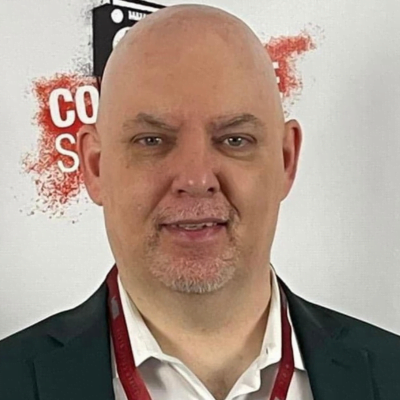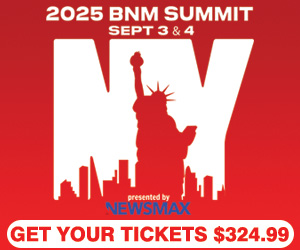I’ve written numerous times about the power of social media and its importance in the sports radio industry. Simply put, it’s where your audience lives, and you can’t afford not to be present in it. Yet some brands still go hours, or even worse days, not promoting their content.
My theory has always been, that inside of each radio station’s social media pages lies a couple of listeners who carry meters. If a brand I’m managing has been granted permission by thousands of people to notify them of on-air developments, and it can help advance my ratings, then why wouldn’t I take advantage of it?
Aside from the obvious of being socially active and present, there remains the question of how to be unique, and use each platform to its full potential. I see it time and time again, stations fall in love with Twitter because messages can be written quickly. Except they sometimes do it at the expense of Facebook. Instead of being strong in both locations, they feel like they have to make a choice. That often results in picking the platform that identifies with their personal interests, and saves them the most time.
That’s a mistake in my opinion. You can’t assume that everyone does what you do. People enjoy being entertained differently. For some, Twitter consumes their life. For others, Facebook, Instagram, Snapchat, Tumblr, Google+ or Pinterest might be their social preference. While I realize challenges exist with being exceptional in every one of these locations, there’s no excuse for not being present and engaged in at least a few of them.
Creating great content is what every host and producer aspires to achieve when they enter a studio each day. They put countless hours into developing topics, researching stories, and laying out a game plan for the show, hoping it will resonate with a local audience. I don’t want to minimize how important it is to create a quality program, but if you lack a distribution strategy to further expose your content afterwards, you’re denying yourself the opportunity to realize the true value of your material.
The audience today listens on their time not ours. You may host a three or four hour talk show on-air, but if people are unavailable to listen, you’ve still got an opportunity to reach them later. You might feature your interviews individually, post each full hour of your talk show without commercials, and even offer quick snippets of your most powerful material all on your website. When the audience enjoys what you do, and have those type of options available to consider, they usually return to hear what they missed.
Assuming the digital offerings are laid out well, then comes promoting it on your brand’s social pages. On Twitter you’ll have to be short and succinct with your messages, whereas Facebook will let you be as wordy as you want. You might use photos or create graphics with text to help deliver more clicks, or feature bold headlines, and open ended questions to peak curiosity. Whichever path you take, the reality is that your approach to using social media to highlight your content will factor heavily into the way your program is received.
If time is something you’re pressed for, and you’re struggling with promoting your work across all of these social media platforms, familiarize yourself with Hootsuite. It allows you to schedule messages in advance, and reach multiple locations at once. It’s a tool I use daily and I can’t recommend it enough.
To expand further on this subject I called on Michael Grey who most recently hosted morning drive on WBBL in Grand Rapids, Michigan. In addition to his time in Grand Rapids, he’s worked for 710 ESPN in Seattle, and AM 590 ESPN in Omaha.
Michael raises some very interesting points about this topic, and I think that as you read his thoughts, you’ll find yourself nodding in agreement with most of it. A strong social distribution strategy, and intimate knowledge of how to best use each platform is necessary to win in today’s radio climate. Obstacles will never fully disappear, but your level of success, and importance to the audience will, if you don’t take this seriously.
Content Creation In The Social Space by Michael Grey
“The Medium is the Message.” – Marshall McLuhan
The words of McLuhan – mandatory reading for anyone in broadcasting – ring true today, though with the necessary adjustment “The Mediums are the Message”.
If you’ve been in radio for more than a moment you’ve undoubtedly heard of “topic trees” or “show maps” or any of a number of other catchphrases for the development of layered talk topics. However, how many of us have considered the additional layers of content that the ever evolving social space requires us to create? How will your show content look when laying out a show plan? What is the video component to today’s hottest show topic? How would your big story this morning represent in a single photograph? How much of your radio show is going to happen – live – in the hours before or after your show airs?
The question of how, or worse whether or not, to integrate social media into a radio show in 2016 is misguided and out of step with reality. The question should be how are you going to integrate your radio show into the social space where everyone else is already broadcasting?
Creating compelling talk content is just part of the job and we all bear the responsibility to not just represent but develop topics in a full 360 degree multi-platform manner. Not only do you owe the audience the effort, but these different mediums and platforms are yours for the branding which makes them personal and portable. Jobs will come and go, but your ability to deliver content across a range of platforms is something you take with you, and is a powerful asset in your climb through the industry. These social spaces, all too often used by those in radio for simple cookie-cutter promotion, should themselves be a part of everything you create.
Social Media experts have said for years that the different platforms each require a unique approach in terms of content production and presentation just like the topics on your show. The natural progression is to view your radio show as one wing of your own personal media company and to develop your show and your topics with unique content and angles for each of the platforms available. This invites almost infinite possibilities when developing programming as it is no longer limited to the studio or the audio realm. After all, what is the most important thing that any of us can provide to sports fans today? Access. The audience has become increasingly accustomed to on-demand access to their favorite content, opinions, commentary, teams, players, coaches and yes, the voices & faces they seek out to get that content.
For example, Facebook Live now makes it possible (mandatory) to host a daily post-show show and invite comments and input from the audience that already follows you in a personal and unique way. It’s also a way to grant last-minute, breaking-news access to your show when your team trades it’s starting quarterback 3 hours after it aired. With the state of the news cycle, if you wait until tomorrow to start the conversation you will always be discussing yesterday’s news. A video component to what you’re doing on a daily basis, whether it’s behind-the-scenes coverage or additional programming is a must. It is a prism that shouldn’t just reflect the audio content of the show but guide it and be embraced on its own merits as well.
Video, while incredibly powerful, is just one example of course and every social media platform has its strengths & weaknesses and should be used to accent various aspects of your content and show – just as a topic tree defines the various levels of story development.
Twitter serves the instant gratification crowd & is an excellent tool for reaction & commentary in the moment. Are your producers constantly at the wheel of your show Twitter account for the ‘Wow’ moments throughout the program? They should be. The individual Tweets may capture spontaneity but discipline in using the platform to ensure that they’re captured should be anything but. It’s a powerful in-the-moment lure to bring people to the table.
Can you catch a moment in a photo from your everyday life and grow that into a topic for the next day’s show? That’s Instagram and the exploding world of Snapchat (10 BILLION videos posted as of April). A chance for people to get a peek at your world in a first person perspective is yet another level of connection and – more importantly – a way to develop unique aspects of the day’s biggest stories to extend the conversation.
Each unique platform needs to be used to generate content and your brand development in unique ways (a point missed all too often in radio with one-size-fits-all, e-blast style posts about the “radio” portion of the product line). Social Media has made it not just possible but imperative to take anything you present on your radio show into these spaces and to further develop everything that you do accordingly. Used correctly you will not only satisfy an audience increasingly granted access from every possible angle but retrain your own mind about the development of your product & brand in the process.
Everything that we do on the air or in the digital space comes with the ability and responsibility to develop tactics & topics unique to all of these platforms in creating a complete product.
So what does tomorrow’s show look like?

Jason Barrett is the Founder and CEO of Barrett Media. The company launched in September 2015 and has provided consulting services to America’s top audio and video brands, while simultaneously covering the media industry at BarrettMedia.com, becoming a daily destination for media professionals. Prior to Barrett Media, Jason built and programmed 95.7 The Game in San Francisco, and 101 ESPN in St. Louis. He was also the first sports programmer for SportsTalk 950 in Philadelphia, which later became 97.5 The Fanatic. Barrett also led 590 The Fan KFNS in St. Louis, and ESPN 1340/1390 in Poughkeepsie, NY, and worked on-air and behind the scenes at 101.5 WPDH, WTBQ 1110AM, and WPYX 106.5. He also spent two years at ESPN Radio in Bristol, CT producing ‘The Dan Patrick Show’ and ‘GameNight’. JB can be reached on Twitter @SportsRadioPD or by email at Jason@BarrettMedia.com.



